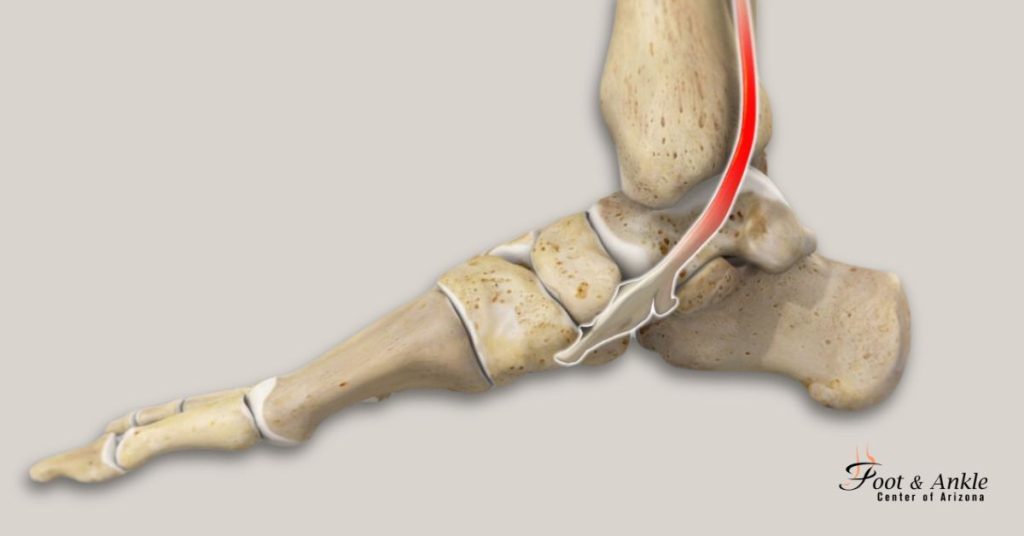When the tibialis tendon becomes inflamed or torn, it leads to a condition known as tibialis tendonitis. This is a prevalent foot and ankle problem that can cause significant discomfort and mobility issues.
Understanding the Tibialis Tendon
The tibialis tendon plays a crucial role in foot mechanics. It connects the calf muscle to the inside of the foot, providing arch support and stability while walking. When this tendon is compromised due to injury or overuse, it can lead to arch collapse, commonly known as flatfoot.
Causes of Tibialis Tendonitis
Several factors can contribute to tibialis tendonitis, including:
- Accidental falls leading to foot or ankle injuries
- Overuse due to high-impact activities such as basketball and tennis
- Repetitive movements like running
- Underlying health conditions such as obesity, diabetes, and hypertension
This condition is more frequently observed in women and individuals over 40 years old.
What Are The Symptoms Of Tibialis Tendonitis?
To ensure proper diagnosis, a comprehensive exam by a foot and ankle specialist in Phoenix is essential. However, common symptoms of tibialis tendonitis include:
- Pain along the inside of the foot and ankle
- Increased discomfort during physical activity, making walking or running difficult
- Swelling from the lower leg to the inside of the foot and ankle
- Limited range of motion and flexibility
- A noticeable change in foot shape, such as a collapsed arch
Effective Treatment Options for Tibialis Tendonitis
There are several treatment options available for tibialis tendonitis, ranging from conservative approaches to advanced medical treatments.
Orthotics and Bracing
For mild cases, custom orthotics and braces can help support the arch and reduce strain on the tibialis tendon.
Shockwave Therapy (EPAT)
A modern and non-invasive treatment, extracorporeal pulse activation technology (EPAT) is a safer and more effective alternative to traditional surgery. This therapy is beneficial for multiple foot and ankle conditions, including tibialis tendonitis.
How EPAT Works:
- Patients undergo a minimum of three weekly sessions for several weeks
- Each session lasts about ten minutes
- Additional sessions may be required for severe cases
EPAT works by delivering pressure waves that stimulate the metabolism, improve blood circulation, and accelerate tissue healing. Clinical studies have shown that this treatment is safe, with no adverse effects reported.
Additional Strengthening Techniques
Incorporating a strengthening program such as toe yoga can further aid in recovery for those suffering from tibialis tendonitis. Strengthening the surrounding muscles can help provide better support and prevent future injuries.
Get Expert Help for Tibialis Tendonitis
If you’re experiencing symptoms of tibialis tendonitis, the team at the Foot and Ankle Center of Arizona can provide a thorough evaluation and recommend the best treatment plan. Schedule a consultation today to find out if EPAT is the right solution for you.




